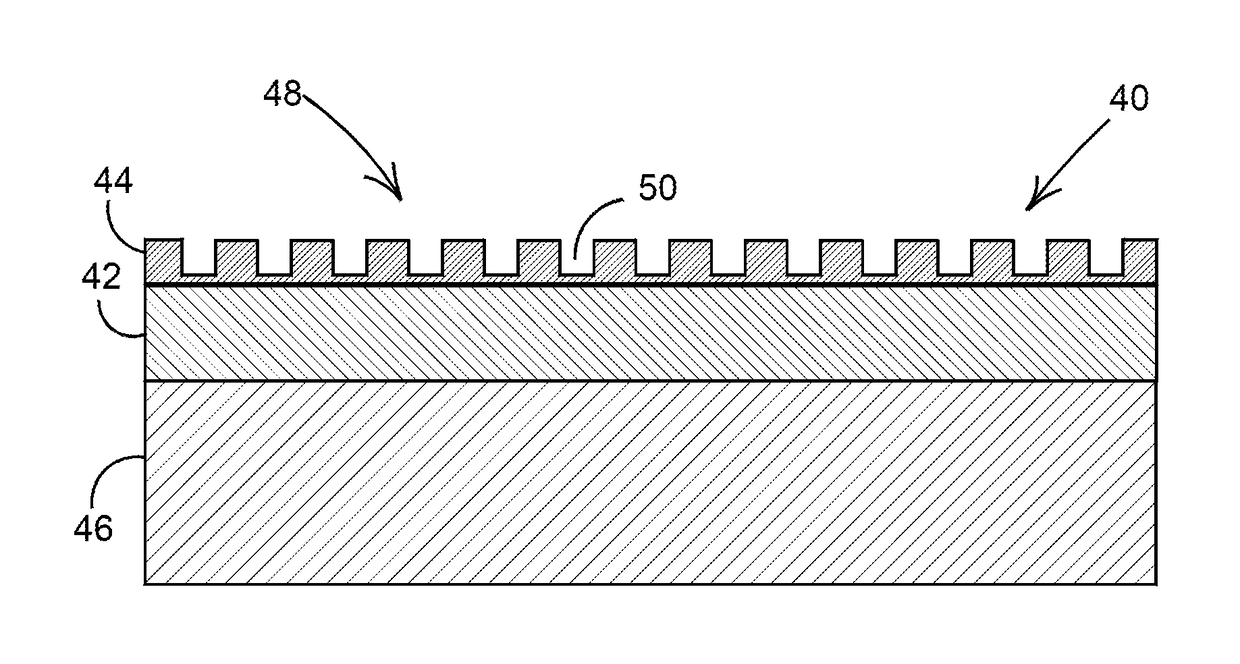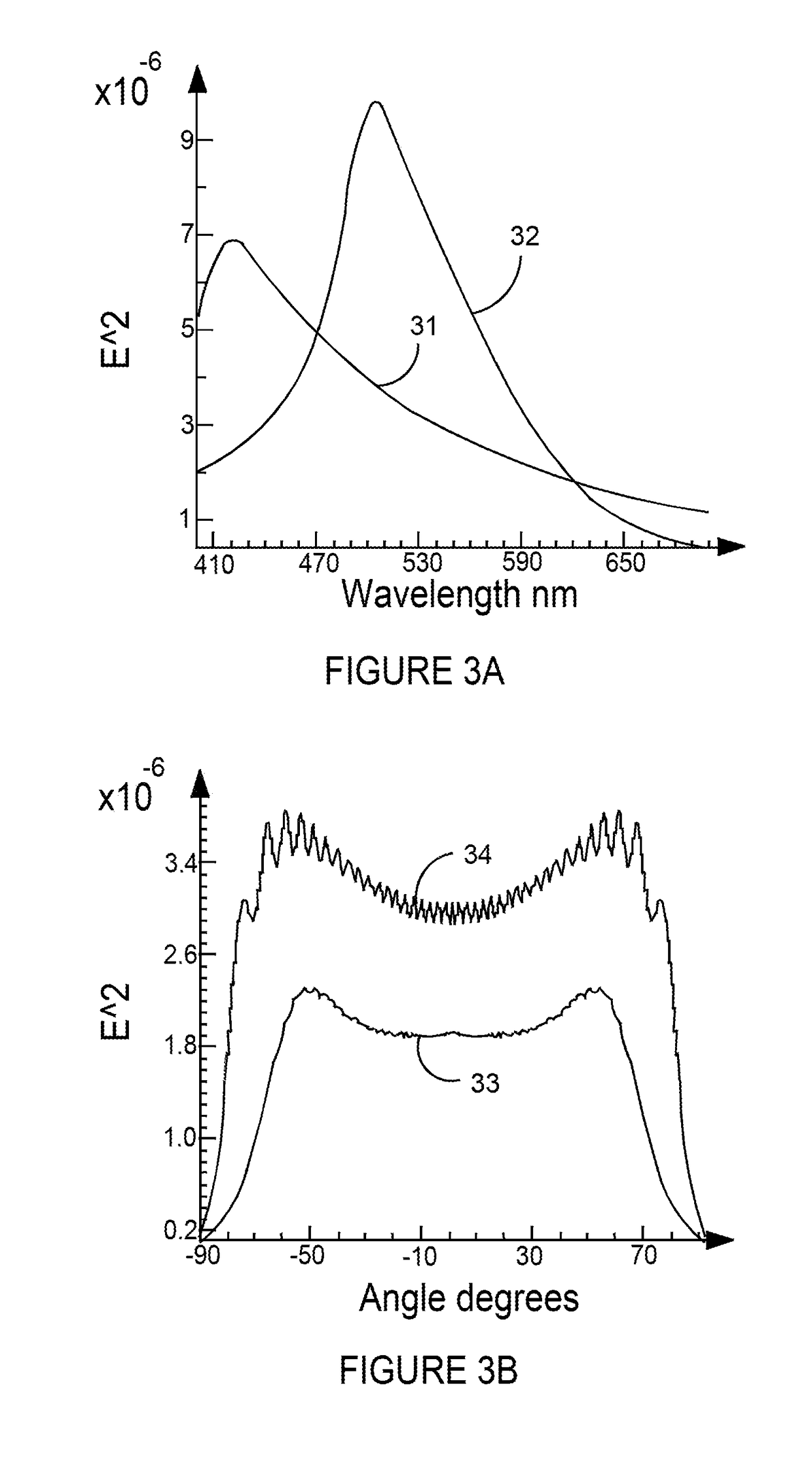Organic light emitting diode structure
a light-emitting diode and organic technology, applied in the direction of basic electric elements, semiconductor devices, electrical equipment, etc., can solve the problems of limited efficiency of oled, inefficiency of light extraction, and limited improvement in relation to oled efficiency, so as to suppress the propagation of surface plasmon polaritons
- Summary
- Abstract
- Description
- Claims
- Application Information
AI Technical Summary
Benefits of technology
Problems solved by technology
Method used
Image
Examples
first embodiment
[0040]FIG. 2 shows in section, an OLED 20 according to the present invention, whereby an organic electroluminescent material layer 22 is located between two electrodes; an anode 24 and a reflecting cathode 26. As detailed above HIL, HTL, ETL and / or an HBL layer could also be used in the OLED 20 to improve electrical efficiency as required.
[0041]The anode 24 is fabricated as a plasmonic metallic photonic crystal (PC) layer and is transparent and has a surface through which light is emitted from the OLED 20 to the outside. In this case, the PC layer is a 1-100 nm silver (Ag) layer, but the PC layer may be fabricated of any suitable material as will become apparent to a skilled person having read this specification, e.g., aluminium (Al), gold (Au), etc. As above the cathode 26 may be fabricated from any suitable material (e.g., magnesium-silver or lithium-aluminium alloy).
[0042]It is known that metals conduct electricity because electrons in the metal are generally free to propagate th...
second embodiment
[0062]FIG. 4 shows in section, an OLED 40 according to the present invention, whereby an organic electroluminescent material layer 42 is located between two electrodes; an anode 44 and a reflecting cathode 46. As detailed above HIL, HTL, ETL and / or HBL could also be used in the OLED 40 to improve electrical efficiency as required.
[0063]The anode 44 is fabricated as a plasmonic metallic photonic crystal (PC) layer and is transparent and has a surface through which light is emitted from the OLED 40 to the outside. In the present embodiment the PC layer is a silver (Ag) layer with depth dA having at least one grating formation 48 comprising a regularly repeating periodic structure formed therein.
[0064]Although fabricated of evaporated silver in the present embodiment, the anode 44 may be fabricated of any suitable material using any suitable technique as will become apparent to a skilled person having read this specification, e.g., gold (Au), aluminium (Al), etc. Furthermore, the catho...
PUM
 Login to View More
Login to View More Abstract
Description
Claims
Application Information
 Login to View More
Login to View More - R&D
- Intellectual Property
- Life Sciences
- Materials
- Tech Scout
- Unparalleled Data Quality
- Higher Quality Content
- 60% Fewer Hallucinations
Browse by: Latest US Patents, China's latest patents, Technical Efficacy Thesaurus, Application Domain, Technology Topic, Popular Technical Reports.
© 2025 PatSnap. All rights reserved.Legal|Privacy policy|Modern Slavery Act Transparency Statement|Sitemap|About US| Contact US: help@patsnap.com



